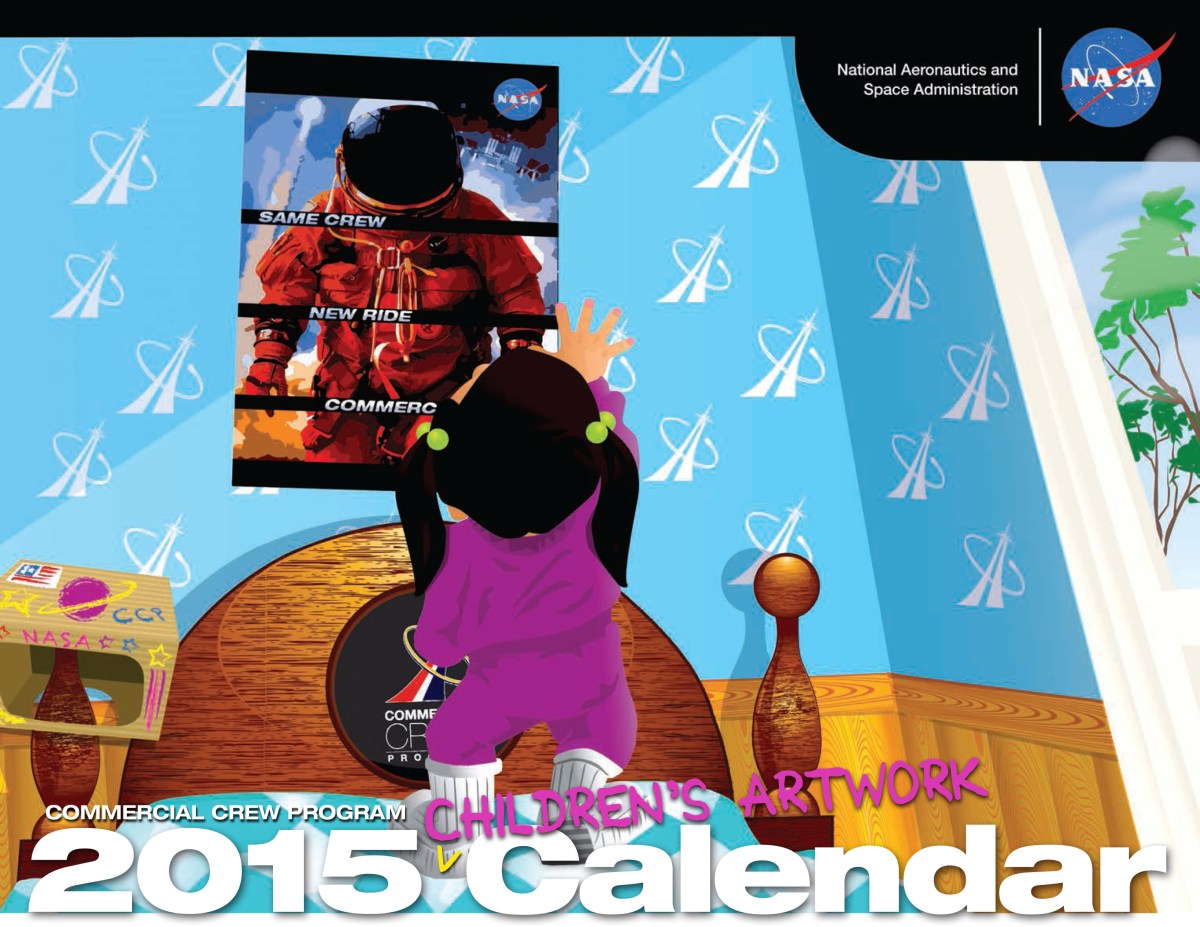NASA’s Commercial Crew Program partners laid out their plans Monday for flights tests leading up to operational missions taking astronauts to the International Space Station. Both Boeing and SpaceX anticipate uncrewed flight tests followed by crewed flight tests with at least one NASA astronaut aboard the CST-100 and Crew Dragon spacecraft, respectively. After their systems are certified by NASA, they will begin transporting crews to the station. Because of lead time requirements established by the companies in their proposals, they will receive what is known as Authority to Proceed (ATP) when they have met established development-related criteria, and NASA has determined the need for a mission. The Authority to Proceed marks the start of lead time needed to purchase hardware and process their systems for those missions. Boeing may receive the Authority to Proceed before SpaceX, though that does not necessarily mean that Boeing’s CST-100 will fly before the SpaceX Crew Dragon.
Category: Commercial Spaceflight
SpaceX Pad Abort Test Article Readied For Flight
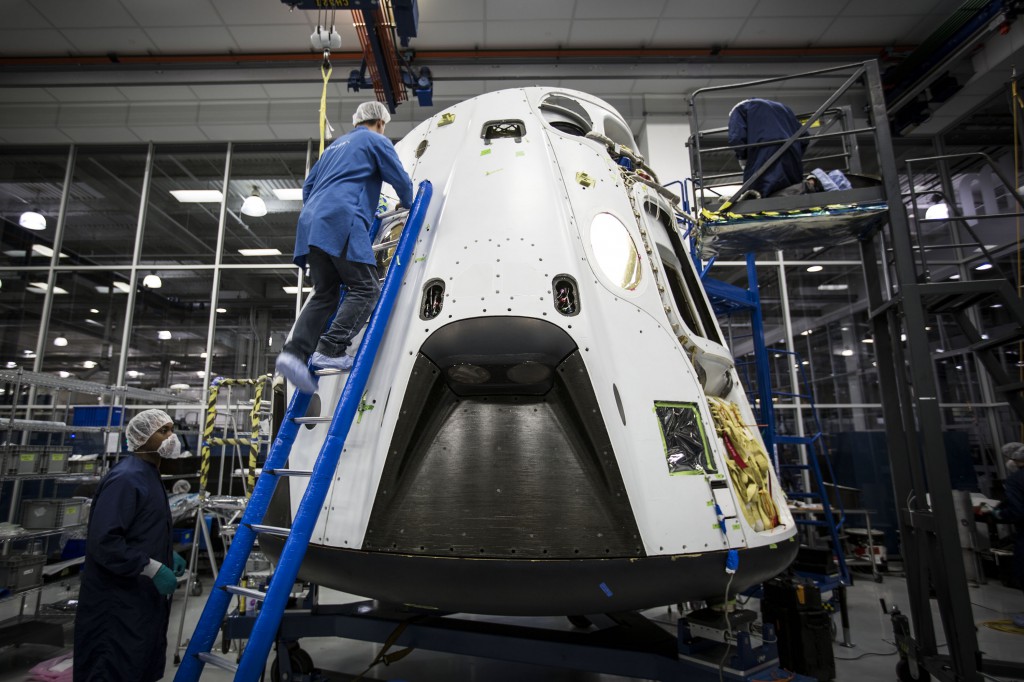 SpaceX is preparing a test version of its Crew Dragon for an upcoming flight that will simulate an emergency abort from the launch pad. The Crew Dragon is designed to carry astronauts to the International Space Station, and the ability to abort from a launch or pad emergency and safely carry crew members out of harm’s way is a critical element for NASA’s next generation of crewed spacecraft. The pad abort test will take place from Cape Canaveral Air Force Station’s Space Launch Complex 40 in under its Commercial Crew Integrated Capability (CCiCap) agreement with NASA, but some data gathered during the development flight will be critical for the company as it continues on the path to certification.
SpaceX is preparing a test version of its Crew Dragon for an upcoming flight that will simulate an emergency abort from the launch pad. The Crew Dragon is designed to carry astronauts to the International Space Station, and the ability to abort from a launch or pad emergency and safely carry crew members out of harm’s way is a critical element for NASA’s next generation of crewed spacecraft. The pad abort test will take place from Cape Canaveral Air Force Station’s Space Launch Complex 40 in under its Commercial Crew Integrated Capability (CCiCap) agreement with NASA, but some data gathered during the development flight will be critical for the company as it continues on the path to certification.
Recap of Today’s Commercial Crew Briefing
 Read our recap of today’s news media briefing with NASA’s administrator, Commercial Crew Program manager and astronaut along with Boeing and SpaceX officials. Not to spoil it, but exciting times are near as everyone works toward launches with crews in 2017.
Read our recap of today’s news media briefing with NASA’s administrator, Commercial Crew Program manager and astronaut along with Boeing and SpaceX officials. Not to spoil it, but exciting times are near as everyone works toward launches with crews in 2017.
NASA, Boeing, SpaceX Outline Path to Flight
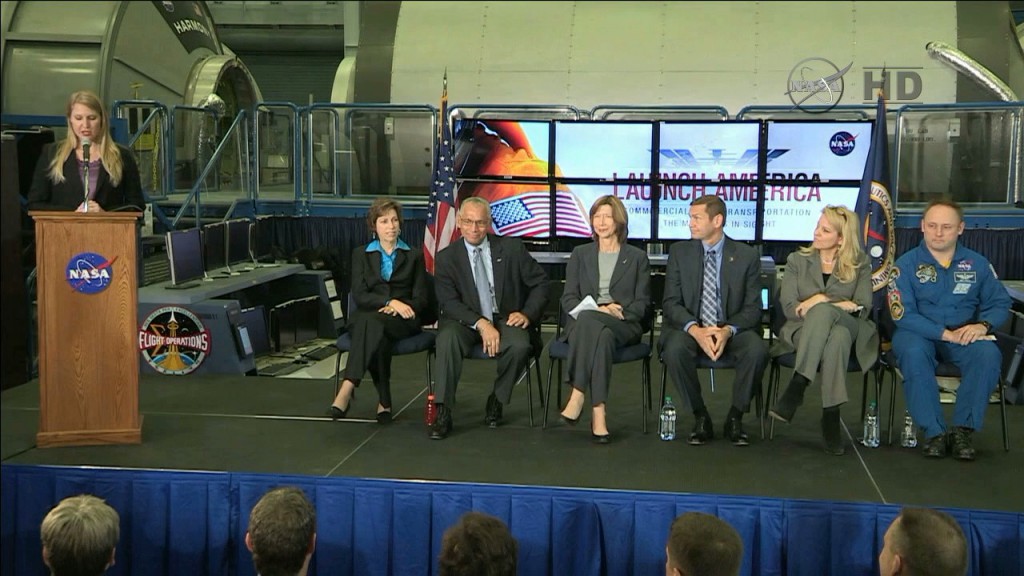
By Steven Siceloff,
NASA’s Kennedy Space Center, Fla.
Spacecraft systems testing followed by increasingly complex flight tests and ultimately astronauts flying orbital flights will pave the way during the next few years to operational missions to the International Space Station that will deliver crews on American vehicles launching from American soil for the first time since 2011.
That is the path forward laid out Monday as two companies and teams of engineers work toward building safe, reliable and cost-effective spacecraft and systems that will take astronauts to the station from American launch complexes.
Boeing’s schedule calls for a pad abort test in February 2017, followed by an uncrewed flight test in April 2017, then a flight with a Boeing test pilot and a NASA astronaut in July 2017.
SpaceX anticipates a pad abort test later this spring as part of the previous development phase, then an uncrewed flight test in late 2016 and a flight test with crew in early 2017.
Speaking for the first time since the awarding of the final development and certification contracts, officials from NASA’s Commercial Crew Program, Boeing and SpaceX revealed some of the details of their plans to cross the chasm from spacecraft and launch system design to flight tests, certification and operational missions to the station.
“It’s an incredible testament to American ingenuity and know-how, and an extraordinary validation of the vision we laid out just a few years ago as we prepared for the long-planned retirement of the space shuttle,” said Charlie Bolden, NASA administrator. “This work is part of a vital strategy to equip our nation with the technologies for the future and inspire a new generation of explorers to take the next giant leap for America.”
Boeing and SpaceX were selected in September 2014 to finalize their respective CST-100 and Crew Dragon spacecraft along with the rockets that will lift them into orbit and all of the ground and mission operations networks essential for safe flights. Both companies have worked with the Commercial Crew Program throughout multiple development phases, continuing to advance their designs before being chosen to complete their systems, reach certification and then fly astronauts to the station.
The goal of NASA’s effort is to provide an American launch vehicle and spacecraft capable of safely carrying astronauts to the station. Unlike other NASA spacecraft, though, this new generation of human-rated vehicles will be designed, built, operated and owned by the companies themselves, not NASA. NASA will buy space transportation services from the companies for astronauts and powered cargo just as the agency does already with the Commercial Resupply Services initiative that uses privately developed and operated rockets and spacecraft to deliver critical cargo to the station.
10 More Things To Know About Commercial Crew Transportation
- More Than One Provider: American industrialization has long shown the benefits to customers of competitive markets, and NASA is capitalizing on that approach through the Commercial Crew Transportation Capability (CCtCap) contracts. The agency selected two independent systems designed by Boeing and SpaceX that, once certified, will add to the fleet of ships serving the International Space Station. Multiple awards maximizes meeting the program objectives, provides more options and flexibility for the agency throughout contract performance, reduces overall risk to the program, and best ensures successfully accomplishing safe, reliable missions to the station. Boeing and SpaceX are moving forward on their respective plans, providing NASA options for its transportation service needs while meeting the agency’s rigorous demands for safety.
- American Launches: NASA’s Commercial Crew Program is restoring the nation’s capability to launch astronauts once again from Florida’s iconic spaceport. Boeing and SpaceX plan to use hangars and launch facilities at NASA’s Kennedy Space Center and Cape Canaveral Air Force Station to ready their spacecraft, rockets and crews for flight.
- More Research In Space: The Boeing CST-100 and SpaceX Crew Dragon will carry four crew members each mission, which will enable the crew complement on the International Space Station to increase from six to seven crew members. As a result, the total crew research time on the orbiting laboratory can expand from 40 hours each week to 80, enabling critical science investigations that increase our understanding of what it takes to live and work in space while also benefiting life on Earth.
- Methodical Approach To Safety: NASA’s extensive experience and expertise in human spaceflight has produced a robust encyclopedia that will be put to use in certifying new designs for use by America’s astronauts. The agency’s spaceflight experts have worked closely with industry partners as they detailed their designs and tested components and will remain in close contact with them through increasingly complex testing and flight milestones. The Federal Aviation Administration, or FAA, also is a partner in ensuring the launches meet public safety requirements.
- Joint Test Team: Astronauts who will fly Commercial Crew missions to the station will work closely with contractor-led test teams throughout the final phases of development and certification of the Boeing CST-100 and SpaceX Crew Dragon. This Joint Test Team approach will include a NASA astronaut on board the flight test to the International Space Station. This approach follows NASA’s historical approach of having crew members intimately involved in the development of their spacecraft.
- Making Progress: NASA and its industry partners know that going from design to construction and operations is a complex process that requires extra attention to detail. Boeing and SpaceX will build myriad ground systems, adapt facilities to use as processing hangars and upgrade control centers that are needed to safely and successfully fly humans to and from the International Space Station.
- Ease Of Operation: The new generation of American crewed spacecraft will use computer and avionics technology that will make the spacecraft far less strenuous for crews to operate. Many tasks will be automated, but astronauts will be able to assume manual control if necessary. Getting to space is never easy, but it will be more automated.
- American Ingenuity: While NASA defined requirements for the space systems that will carry the nation’s astronauts to the station, it left the design details and development approach to the companies. This approach allowed companies to incorporate their own innovations to make a cost-effective space system that can be suited to other customer needs as well as NASA’s.
- Certification, Then Operation: Before either spacecraft flies with astronauts aboard, NASA will certify that they meet NASA’s safety and performance requirements. The interim development milestones outlined by Boeing and SpaceX will provide incremental progress along the way to show each is safe to fly. Once certified, NASA will use the systems to fly U.S. and U.S.-sponsored astronauts to the International Space Station. The crew systems also will serve as a lifeboat for the station in case of an emergency.
- Parallel Path For Human Space Exploration: NASA’s work to turn over low-Earth orbit astronaut transportation to commercial companies allows the agency to use other resources to develop the Orion spacecraft and Space Launch System rocket for missions into deep space and for eventual journeys to Mars. Both destinations – the International Space Station and deep space – are vital in the nation’s space exploration efforts, and one cannot be successful without the other.
Don’t Let the Year Slip By!
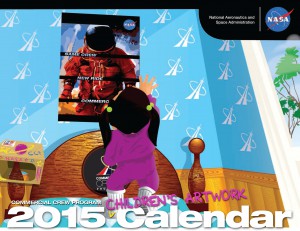 We’re almost two weeks into 2015, so if you don’t have some new digits dangling from your door or wall by now it’s time to catch up. The good news is we can help. Download our 2015 edition of the Commercial Crew Program’s children’s artwork calendar today and you won’t have to keep looking back at yesteryear!
We’re almost two weeks into 2015, so if you don’t have some new digits dangling from your door or wall by now it’s time to catch up. The good news is we can help. Download our 2015 edition of the Commercial Crew Program’s children’s artwork calendar today and you won’t have to keep looking back at yesteryear!
Flight Tests, Component Evaluations Highlight 2015 Plans
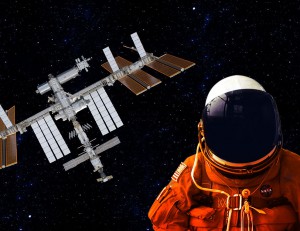 We’re looking forward to an exciting 2015 here at Commercial Crew. A sampling of our calendar: two abort tests, a free-flight test, and component evaluations. All of these are important steps as NASA and our partners progress toward launching space station crews again from American soil!
We’re looking forward to an exciting 2015 here at Commercial Crew. A sampling of our calendar: two abort tests, a free-flight test, and component evaluations. All of these are important steps as NASA and our partners progress toward launching space station crews again from American soil!
Turn the Page: Print Your 2015 Commercial Crew Calendar
 Just in time for the new year, here is the Commercial Crew Program 2015 Children’s Artwork Calendar. More than 50 students, ages 4-16, submitted artwork depicting human spaceflight as they see it in the December contest. A range of topics was offered and students from across the country sent in submissions. We offer a huge “thank you!” to everyone who submitted their work and hope that everyone will enjoy and use this calendar next year. Thanks for a great 2014! Download and print the calendar here.
Just in time for the new year, here is the Commercial Crew Program 2015 Children’s Artwork Calendar. More than 50 students, ages 4-16, submitted artwork depicting human spaceflight as they see it in the December contest. A range of topics was offered and students from across the country sent in submissions. We offer a huge “thank you!” to everyone who submitted their work and hope that everyone will enjoy and use this calendar next year. Thanks for a great 2014! Download and print the calendar here.
NASA Commercial Crew Partners Complete 23 Milestones in 2014, Look Ahead to 2015
 NASA’s Commercial Crew Program and the agency’s industry partners completed 23 agreement and contract milestones in 2014 and participated in thousands of hours of technical review sessions focused on creating a new generation of safe, reliable and cost-effective crew space transportation systems to low-Earth orbit destinations. Read more about this year’s milestones and achievements and what we have to look forward to in 2015 as we work to bring crewed launches back to the U.S. http://go.nasa.gov/1AQKBCY
NASA’s Commercial Crew Program and the agency’s industry partners completed 23 agreement and contract milestones in 2014 and participated in thousands of hours of technical review sessions focused on creating a new generation of safe, reliable and cost-effective crew space transportation systems to low-Earth orbit destinations. Read more about this year’s milestones and achievements and what we have to look forward to in 2015 as we work to bring crewed launches back to the U.S. http://go.nasa.gov/1AQKBCY
Getting to Space Isn’t Easy, But It’ll Be More Automated
Since the beginning of the space age, finding the balance of control between human and machine has been a careful pursuit. Thanks to advances in technology and software, Commercial Crew spacecraft will be will be more automated than any that have come before. Learn more: http://go.nasa.gov/1Cw7Weq



